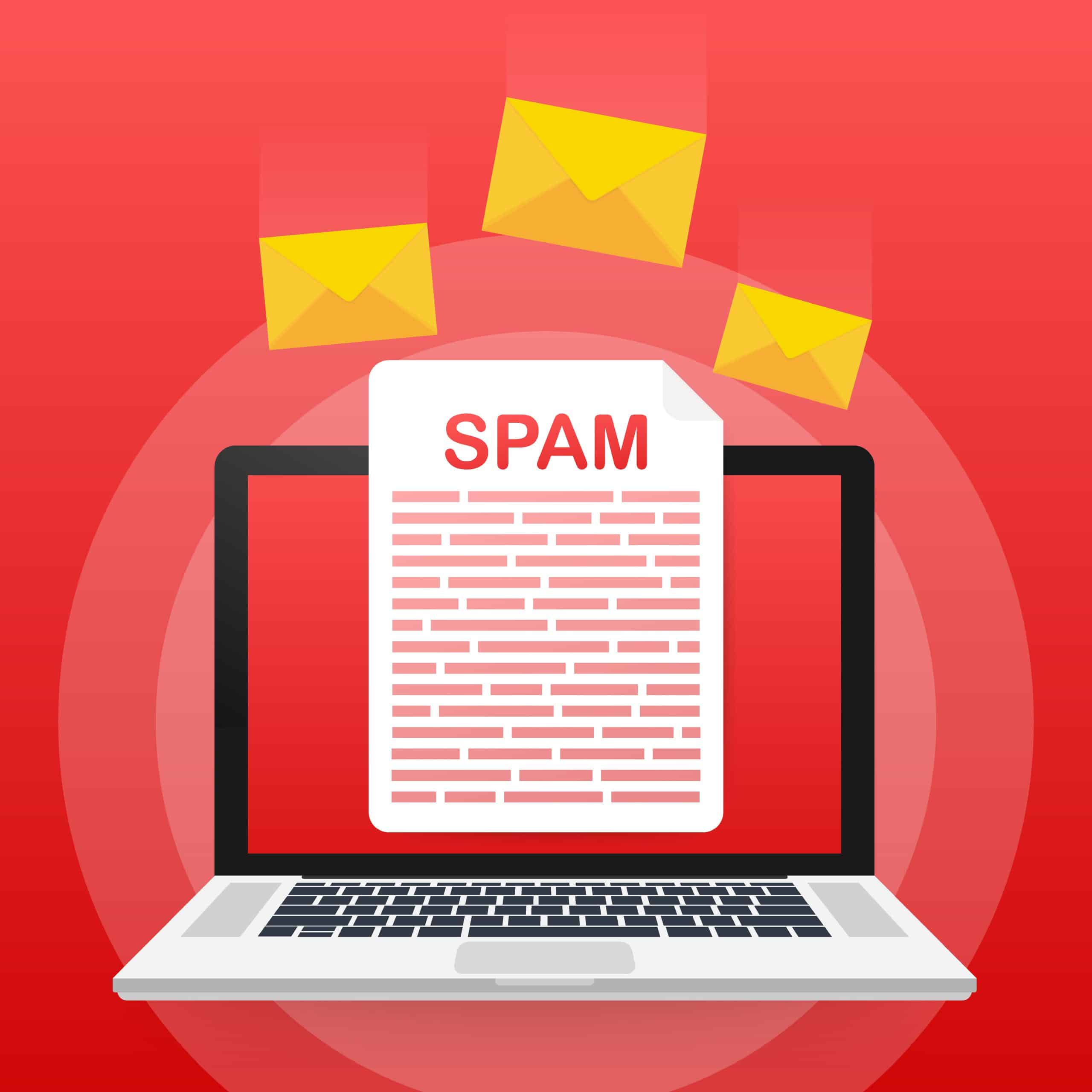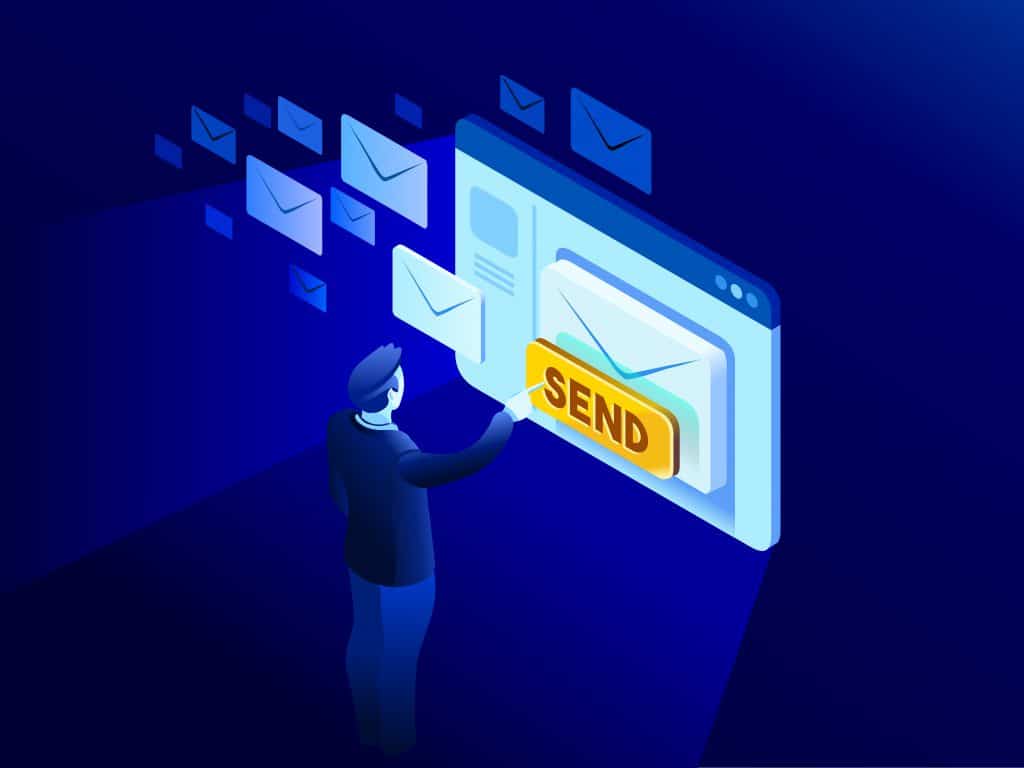Why Are My Emails Going to Spam?
- By Douglas Moore
- Last Updated On July 2, 2023

Table of Contents
- A Recipient Marked Your Email as Spam
- You’re Not Following HTML Best Practices
- Subject Lines Contain Spam Triggers or Are Misleading
- You Don’t Have Permission from Your Recipients
- Your Content Triggers Spam Filters
- You Don’t Include an Unsubscribe Link
- Your “From” Information Is Wrong or Misleading
- You Haven’t Set Up Email Authentication
- You’re Sending Too Many Attachments
- A Few Words Before You Go…
Email marketing is an excellent way to connect with potential customers, build brand awareness, and drive traffic to your website or blog. Unfortunately, it’s also a channel prone to abuse by spammers and has to battle wary email subscribers, filters at ISPs (Internet Service Providers), and email service providers.
Nevertheless, there is no experience more frustrating than having your emails end up in the spam folder of your recipients rather than their inboxes.
If you’ve found that your emails are going to spam instead of your subscribers’ inboxes, keep reading to find out why. Below are some of the most common reasons marketers see emails flagged as spam.
A Recipient Marked Your Email as Spam
One of the main reasons your emails might be going to spam is that a few (or more) of your recipients have marked them as such. This can happen for several reasons, but generally, it’s when people receive unwanted emails or emails from a sender they do not recognize.
Few things can trigger this reaction in people.
First, if you send too many emails too often, recipients may feel like they’re being bombarded and will mark your messages as spam to stop the onslaught.
Second, if your emails are too promotional or try to mislead recipients into downloading or buying something, they may get annoyed and mark such emails as spam.
Finally, if you’re using aggressive or otherwise inappropriate language, recipients may again mark your messages as spam.
If your recipients have marked your messages as spam, there are a few things you can do to fix the situation, although coming back from the spam mark is extremely difficult.
First, try slowing down the frequency of your emails. For example, if you’re sending multiple emails daily, cut back to once or twice a week and see if that makes a difference.
Second, look at the content of your messages and ensure they’re not overly sales-y or otherwise off-putting.
Finally, check your language to make sure it’s respectful and professional. If you make these changes and find that your emails are still going to spam, another issue may be at play (which we’ll explore in the next section).
You’re Not Following HTML Best Practices
The way you code your HTML emails can also trigger spam filters. For example, your email will likely be flagged as spam if you’re not using a proper coding structure or if your code includes common spam triggers like excessive links or images.
To avoid this, follow HTML best practices when coding your email template. Use a proper structure with headings, paragraphs, and lists. Also, limit the number of links and images you include to avoid triggering spam filters.
Subject Lines Contain Spam Triggers or Are Misleading
Subject lines are one of the first things that recipients see when they receive an email, so it’s crucial to make sure that they accurately reflect the content of your email. Unfortunately, many marketers try to trick recipients into opening their emails by including misleading or clickbait subject lines.
For example, a common tactic is to use a subject line like “RE: Your order” in an attempt to make the email look like it’s coming from a customer service representative or is a follow-up for a purchase when it’s not. This can create a sense of urgency and entice recipients to open the email without realizing it’s a marketing message.
In addition to being misleading, some subject lines can contain spam triggers that cause them to be flagged by spam filters. These include words and phrases like “free,” “winner,” “guarantee,” and “percent off.” Using these phrases in your subject line will likely result in your email being sent straight to the recipient’s spam folder by their service provider.
To avoid marking your emails as spam, ensure your subject lines are clear and descriptive. Avoid using trickery or gimmicks, and avoid any spam trigger words or phrases.
You Don’t Have Permission from Your Recipients
Usually, everything boils down to whether the recipient expects the email, i.e., whether we have formal or informal permission from the recipient to contact them.
When the email is marked as spam, the sender didn’t get explicit consent from the recipient to send them emails, or they purchased collected email addresses without the owner’s permission.
If you didn’t get explicit consent from a recipient to add them to your email list, you must stop sending them emails immediately. Not only is this a violation of their privacy, but it is also illegal in some states and will automatically flag your account as spam by all email service providers.
To avoid this, only email people who have explicitly permitted you to do so. For instance, these are the people who subscribe to your blog or services and thick the box about getting promotional or informative emails from you.
As we’ve said, you can also run into legal trouble if you purchase or collect email addresses without the owner’s consent. If you buy an email list from a third-party vendor, there’s no guarantee that all addresses on that list are valid or that their owners want to receive your emails.
Fines may be imposed by authorities such as the Federal Trade Commission (FTC) in the USA. Additionally, the authorities issue press releases along with imposing hefty fines.
To avoid this problem, only use email addresses that you’ve collected yourself and that you’re sure are valid and up-to-date.
Your Content Triggers Spam Filters
Just like your subject line, your email content might trigger spam filters. This can be a result of many things. Maybe you’re using too many exclamation points or including links to shady websites. Perhaps you’re selling something, and your email looks like a generic sales pitch – today’s advanced AI algorithms can recognize generic versus meaningful and personal content.
However, it might also be that you’re just using too many keywords that set off red flags for spam filters.
Here are a few tips for avoiding content that will trigger spam filters:
- Avoid using too many exclamation points, all caps, or other signs of “shouting.”
- Don’t include links to websites that are known to be spammy or untrustworthy. If you use links, only link to trusted and reputable sources. But, even then, you should minimize the presence of links in emails.
- Don’t make your email look like a generic sales pitch. Instead, personalize your content and make it relevant for the recipient.
- Use keywords sparingly, and only if they’re relevant to the subject of your email. Too many keywords can make your email look like spam.
You Don’t Include an Unsubscribe Link
Another possible reason your emails are going to spam is that you haven’t included an unsubscribe link. When people receive emails that they didn’t sign up for, or that are no longer relevant to them, they often hit the “spam” button as a way of unsubscribing – since that’s the only option they have to stop you.
You can’t win by forcing people to receive your emails. If you don’t give them an easy way to unsubscribe from your emails, people will likely continue to mark them as spam, hurting your deliverability. Make it easy for people to unsubscribe by including an unsubscribe link in every email you send.
An unsubscribe link is a good thing for at least two reasons.
It Helps Keep Your List Clean and Up-To-Date
People no longer interested in your emails can remove themselves from your list, so you won’t have to worry about them marking your emails as spam. Plus, your list will reflect your active readers or customers more accurately.
It’s Required by Law in Some Countries
The CAN-SPAM Act stipulates that all commercial emails must include an unsubscribe link in the United States. There is a penalty of up to $46,517 for each email that violates the law.
It Shows That You Respect Your Recipients’ Time and Attention
By making it easy for people to unsubscribe, you’re indicating that you understand that they may not want to receive your emails anymore and that you respect that decision.
Your “From” Information Is Wrong or Misleading
When an email is sent, the recipient’s service provider will check the sender’s information against several factors to determine whether or not the email is legitimate. If the sender’s information fails any of these checks, there’s a good chance that the email will be marked as spam.
You can do a few things to ensure your sender information is correct and won’t trigger any spam filters.
Make Sure Your Name Is Accurate and Spelled Correctly
Your name should be your real name or your business’s name. If you use a fake name, there’s a good chance your email will be marked as spam.
Use a Consistent “From” Address
Don’t use a different ‘from’ address for every email you send. Instead, stick with one address, and if possible, use an email address that includes your business name (e.g., [email protected]).
Don’t Use Funky Characters in Your “From” Address
Some characters, such as % and +, can trigger spam filters. Avoid using these characters in your address. Make it clean and easy to read. In this sense, [email protected] is better than [email protected]. If your name is taken, you can try a variation of your initials, but avoid numbers and special characters.
Include a Physical Address in Your Signature
Most businesses include their physical address in their email signature. Because of this, including your physical address helps to legitimize your emails and can prevent them from being marked as spam.
You Haven’t Set Up Email Authentication
One of the most important things you can do to ensure your emails are not marked as spam is to set up email authentication. This means you need to verify that you are the domain owner that is sending the emails. There are a few different ways to do this, but the most common is through SPF (Sender Policy Framework) and DKIM (DomainKeys Identified Mail).
SPF is a DNS record that specifies which servers are allowed to send an email on behalf of your domain. If an email is received from a server not listed in the SPF record, it will likely be marked as spam. DKIM uses cryptographic signatures to verify that an email has not been tampered with during transit.
SPF and DKIM are important for preventing spoofing, which is when someone sends an email using your domain without your permission.
You’re Sending Too Many Attachments
Sometimes, the reason why emails end up in spam is because they contain too many attachments. If your email contains more than a few attachments, it will be flagged as spam.
To avoid this, limit the number of attachments you include in your emails. If you absolutely must consist of multiple attachments, consider sending them in separate emails or zip files into one attachment. You should also compress all files before attaching them to reduce the size of the email.
Another attachment-related tip is to avoid using unusual file types. Stick to common file types like PDFs and JPGs, as these are less likely to be flagged as spam.
A Few Words Before You Go…
If you’ve been wondering why your emails are going to spam, we’ve just seen that there could be quite a few reasons. So we tried to give you a brief understanding of the reasons and what you can do to prevent your emails from being marked as spam.
Whatever the reason, it’s essential to fix the problem quickly so that your messages don’t end up in the spam folder, as your reputation and trust from email service providers are hard to get back.
If you’re unsure how to fix the problem, consider contacting a professional who can help you troubleshoot and get your emails back on track.
View Related Articles

How to Become Tech Savvy
In a world where technology shapes our society and everyday life, knowing how to operate a computer and other common tech gadgets becomes a survival skill.

What two protocols are used to deliver mail messages?
Emailing today is such an easy task. Compose, hit send, and your message travels across oceans and borders to reach its recipient. It is such an easy task that people’s attention starts to drown in their full inboxes, which are also littered by spammers, phishers and other members of the not-so-nice population of netizens.

How to Redirect a URL or Page in WordPress
But what are redirects, and why are they important? What are the different types of redirects? We’ll fill you in on everything you need to know about redirects, and most importantly – how to do them on your WordPress site.